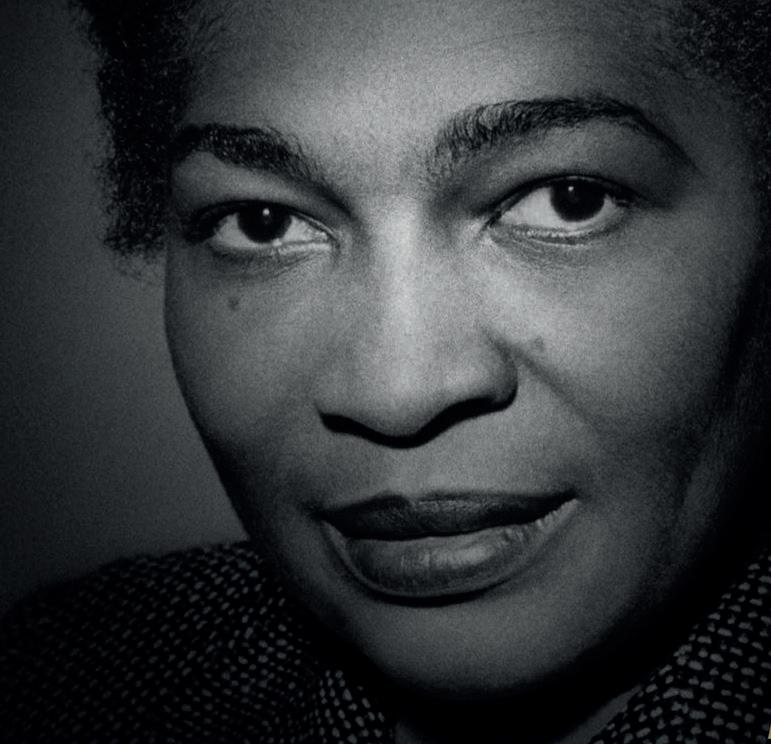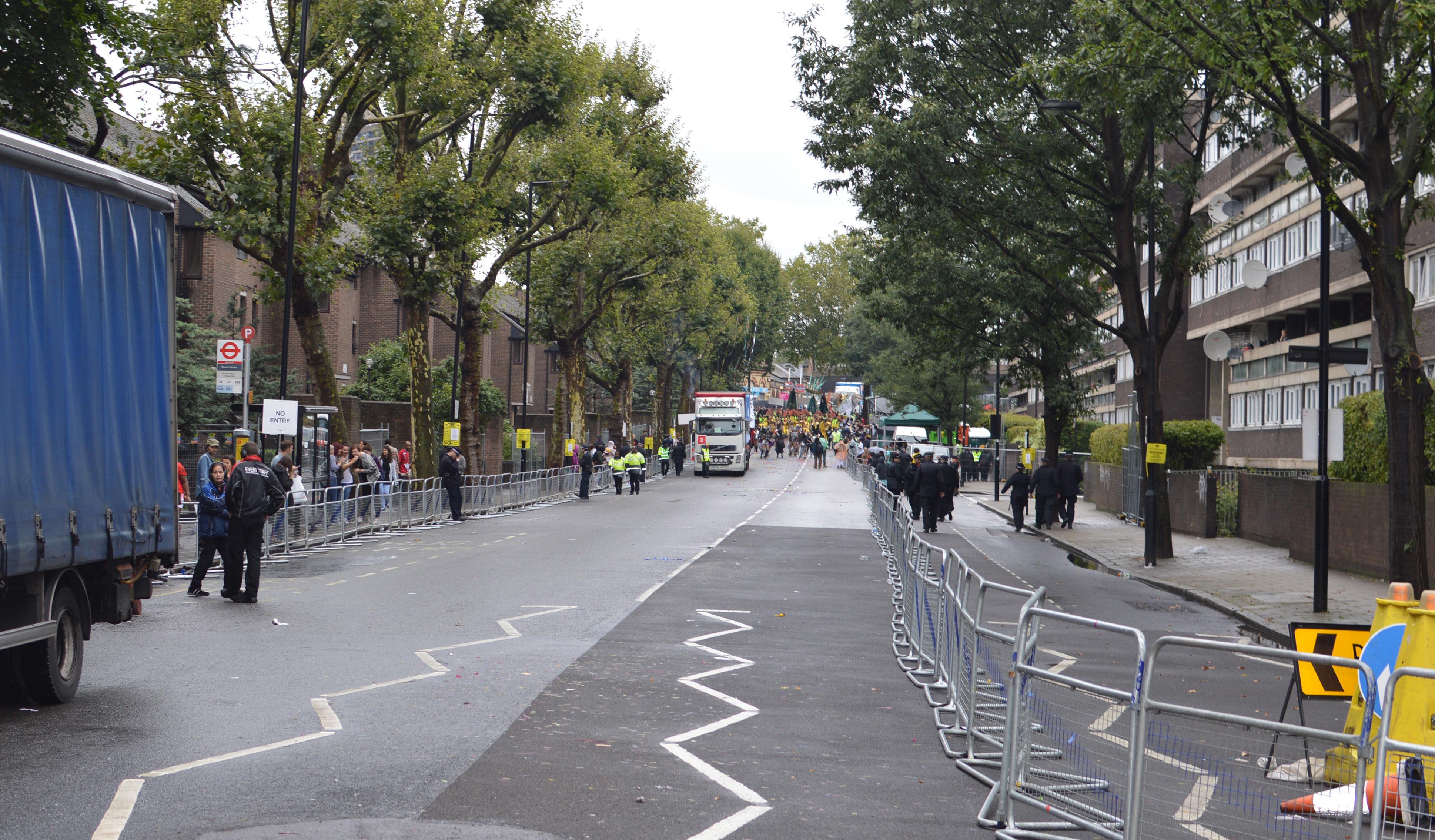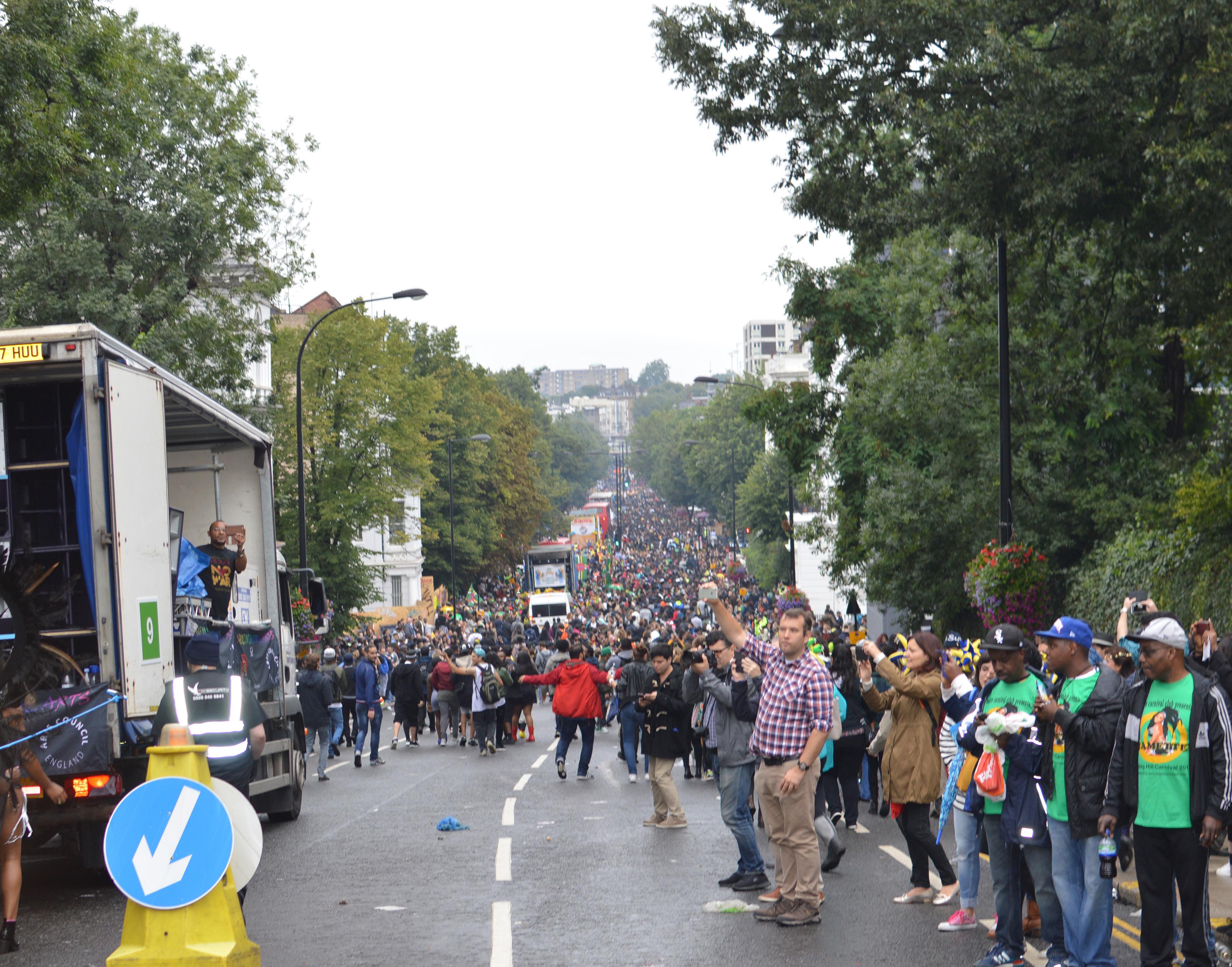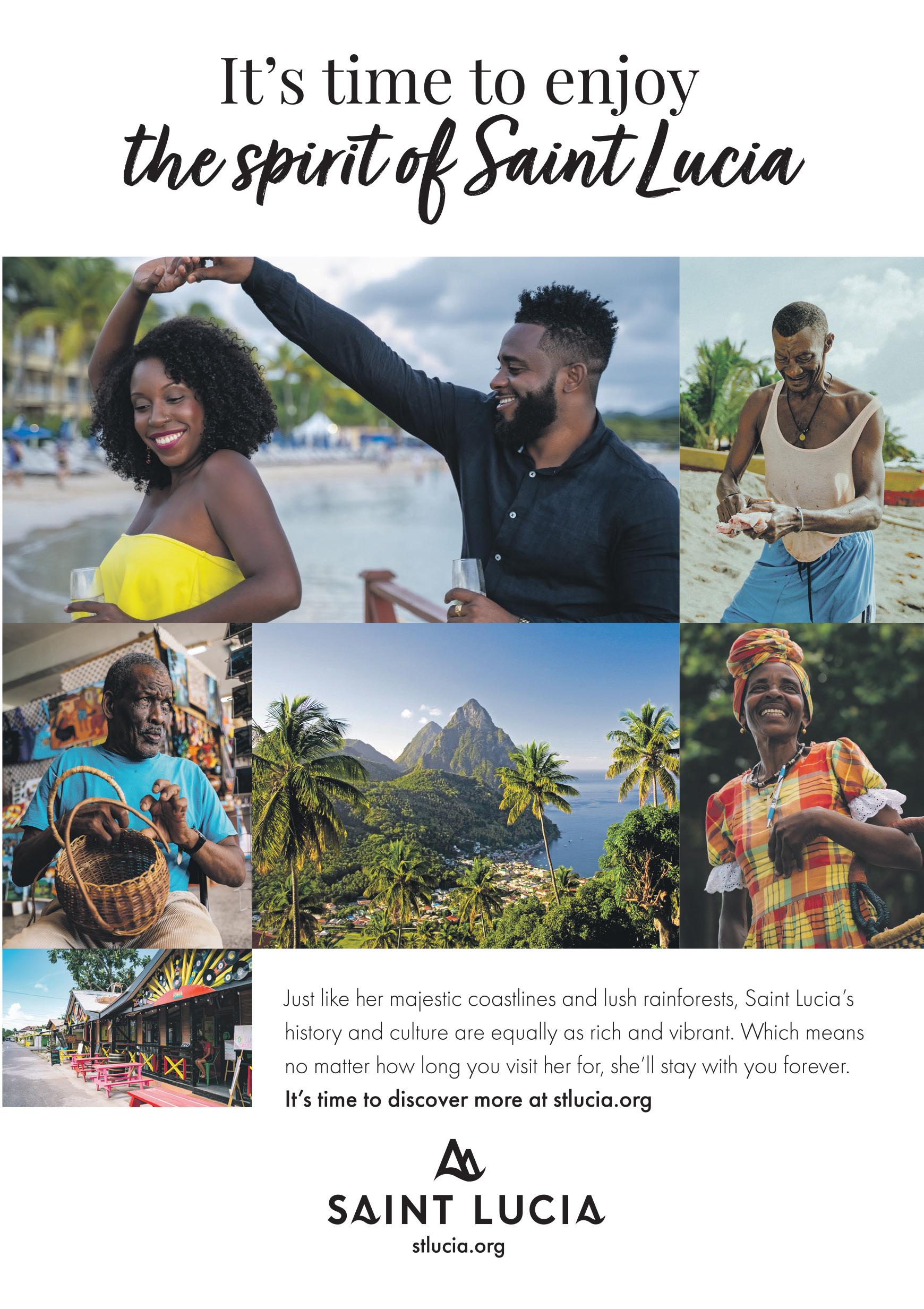
5 minute read
Notting Hill Carnival A Potted History
FEATURE
NOTTING HILL CARNIVAL
Advertisement
A POTTED HISTORY
Where do you start when talking about the beginning of Notting Hill Carnival? Few events have such a disputed history.
By the time the Second World War ended in 1945, London was a city that had survived, but only after experiencing much loss. It was in many ways a drab and wounded place. It was also one with an acute labour shortage, attracting Britain’s colonial Caribbean citizens to cross the waters and increase the volume of the much needed, if not appreciated, working classes.
The first large group to arrive were filmed disembarking from HMT Empire Windrush at Tilbury Docks in June 1948. Mostly young, they brought



with them vibrant colour, energy and a distinctly Caribbean vibe (go online to hear calypsonian Lord Kitchener singing London is the Place for Me as he steps on to British soil).
By the late 1950s, Brixton in the south and Notting Hill in the west of London had the densest populations of Caribbean people in Britain. Anti-immigration feeling grew, alongside unofficial colour bars that made it hard for new arrivals to find accommodation and employment. Yet Caribbean people had long been encouraged to think of themselves as bonafide and deserving British citizens. Simmering tensions boiled over into the Notting Hill Race Riots in 1958, and then tragically in 1959 a young Antiguan man, Kelso Cochrane who lived in Notting Hill, was attacked and murdered by a group of white youths.
Despite being the supposed champion of workers’ rights, the Communist Party of Great Britain failed to protest about Cochrane’s racist murder, infuriating Trinidadian activist – and staunch communist - Claudia Jones. In response, she made a move that many years later earned her the affectionate, although controversial, title ‘Mother of Notting Hill Carnival’.
Using her persuasive oratory and her newspaper, the West Indian Gazette (WIG), Jones brought together seemingly disparate groups of immigrants to demonstrate, march, hold meetings and to work with other anti-racist and anti-imperialist organisations. Crucially, Claudia Jones employed the weapons of art and culture “in the face of the hate from the white
racists”. The events she organised with strong support from like-minded individuals such as Edric and Pearl Connor and Sam King included beauty contests, talent quests, readings and shows by African-American artists and writers who were being introduced to black British audiences. The acclaimed actor and activist Paul Robeson was one of her supporters in these efforts.
Jones brought all these elements together at St Pancras Town Hall, London, on 30 January 1959 for her fund-raising ‘Caribbean Carnival’, which was televised by the BBC. It became an annual event that continued until 1964, the year that she passed away through overwork and the after-effects of ill-treatment in the USA.
Sam King, who had been a passenger on board the Windrush and worked with Jones on the WIG, is often credited as the ‘co-founder of Notting Hill Carnival’ in 1964. This is the year that some cite as the start of Notting Hill Carnival, tracing it to a children’s street party featuring Russ Henderson’s steelband.
The outdoor celebration with which most people are familiar began dates back to late September 1966 when a week-long Notting Hill Fayre took place, organised by the volunteer-run London Free School (LFS). The latter had been co-founded by community worker Rhaune Laslett and photographer and political activist Johnny ‘Hoppy’ Hopkins. Active members of the local community with roots in Africa, the Caribbean, Cyprus and India also contributed to making the inaugural Notting Hill Fayre a reality. Significantly, it included processions to open and close the festivities.
Laslett co-opted as much local talent as she could muster for the processions, including Guyanese activist Andre Shervington and the well-known Trinidadian jazz pianist and pannist Russell Henderson.
Henderson had played for Claudia Jones’s 1959 event, but in 1966 he, together with Sterling Betancourt and Ralph Cherrie, took steelpan to the streets. Caribbean residents responded enthusiastically, pouring out of their homes to follow the “pan men on de road”. It was this unscripted ‘call and response’ dynamic between the three pan men and the residents which unquestionably introduced the uniquely Caribbean flavour into the 1966 festival. Unlike Jones’s indoor Caribbean Carnival shows, this brought Caribbean music onto the street.
In the years that followed, participation on the streets by costumed revellers and organised steelbands increased. Laslett’s vision of an all-inclusive al fresco celebration expanded, underscored by everstronger Caribbean connections with, and contributions to, its organisation and management.
Leslie Palmer, from Trinidad, was a young teacher in London in the 1970s and served as the director of Notting Hill Carnival from 1973 until 1975. He organised sponsorship for bands, encouraged more steelbands to become involved and brought reggae bands into the carnival, while still retaining the magic of traditional masquerade.
Palmer is best known for having invited static sound systems - as opposed to the mobile sounds used on mas band trucks - into carnival for the first time. This provoked some opposition, especially from the steelbands, but Palmer defended his decision. He explained: “The sound systems were the voice of the youth and the people, and to have a carnival and to leave that out was to ignore the demands of the people, because the sound systems were really the most popular entertainment for the youths.”
Under Palmer’s direction, the carnival route was extended and generators were introduced. His organisational abilities laid a foundation for his successors at the helm of the rapidly growing carnival. In particular, Claire Holder, another Trinidadian and a barrister, was chief executive of Notting Hill Carnival for 10 years. Despite being confronted with a multitude of challenges, Holder is seen by many to have brought long-term stability to the leadership of the event. One legacy of the Holder era was the formal division of Carnival into five disciplines: costumed masquerade, calypso, soca, the sound systems (mobile and static) and steelbands. Today, these comprise the ‘arenas’ of Notting Hill Carnival.
Innumerable characters have played their part in the Notting Hill Carnival story. It is a tale with many beginnings, and one which continues to draw us in, spellbound, even as it shifts and changes.
What remains is the fact that, from the outset, London’s very own world-renowned carnival firmly placed Caribbean people in the vanguard of an unstoppable cultural force, which keeps on evolving.
This unique annual August Bank Holiday weekend event continues to showcase the colour, creativity, irrepressible energy, music, resourcefulness and rhythm of Caribbean and many other diaspora peoples, who all share in the rich, culturally textured expression that is Notting Hill Carnival.
For more on carnival visit socanews.com.








